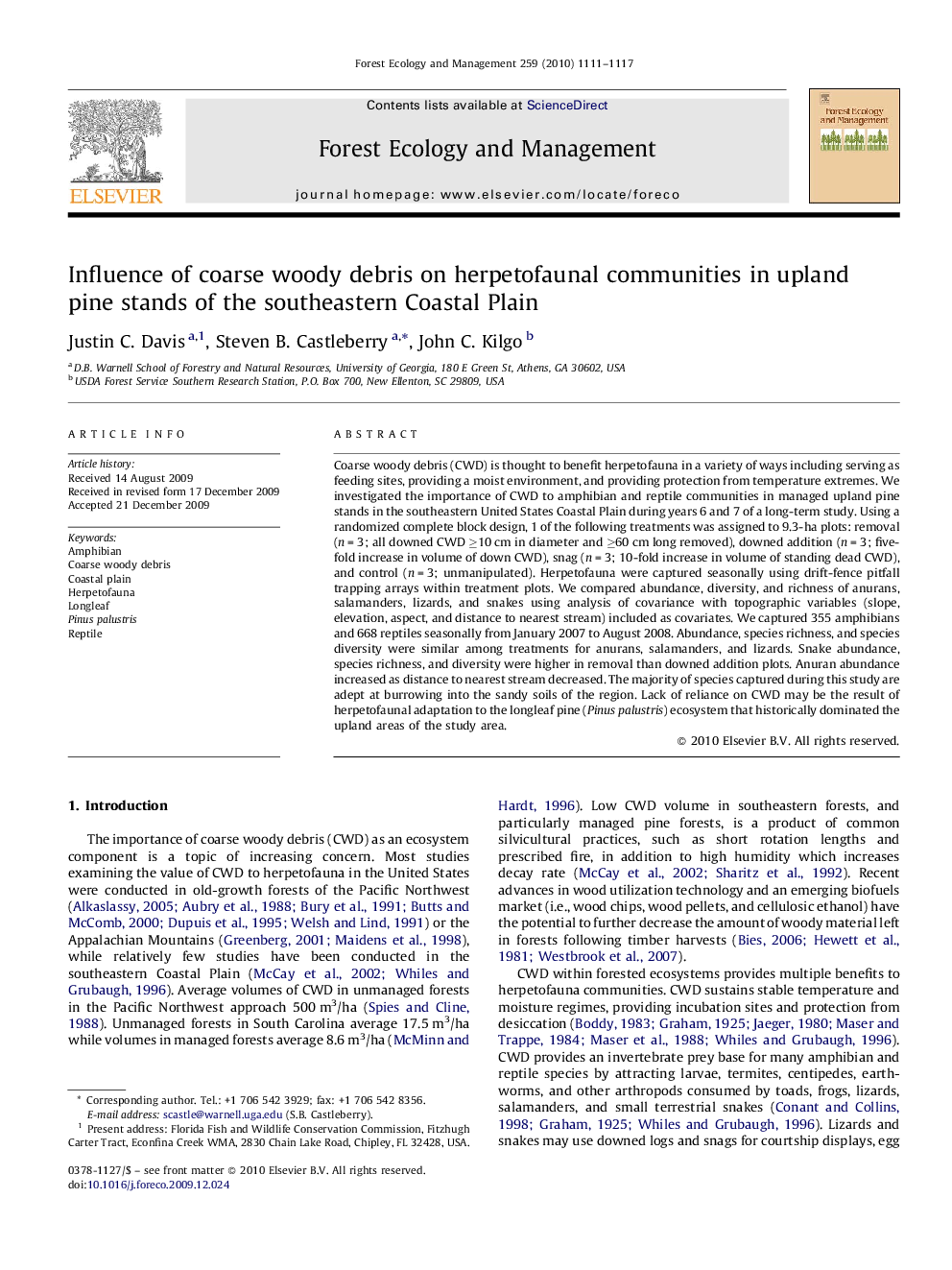| کد مقاله | کد نشریه | سال انتشار | مقاله انگلیسی | نسخه تمام متن |
|---|---|---|---|---|
| 88746 | 159318 | 2010 | 7 صفحه PDF | دانلود رایگان |

Coarse woody debris (CWD) is thought to benefit herpetofauna in a variety of ways including serving as feeding sites, providing a moist environment, and providing protection from temperature extremes. We investigated the importance of CWD to amphibian and reptile communities in managed upland pine stands in the southeastern United States Coastal Plain during years 6 and 7 of a long-term study. Using a randomized complete block design, 1 of the following treatments was assigned to 9.3-ha plots: removal (n = 3; all downed CWD ≥10 cm in diameter and ≥60 cm long removed), downed addition (n = 3; five-fold increase in volume of down CWD), snag (n = 3; 10-fold increase in volume of standing dead CWD), and control (n = 3; unmanipulated). Herpetofauna were captured seasonally using drift-fence pitfall trapping arrays within treatment plots. We compared abundance, diversity, and richness of anurans, salamanders, lizards, and snakes using analysis of covariance with topographic variables (slope, elevation, aspect, and distance to nearest stream) included as covariates. We captured 355 amphibians and 668 reptiles seasonally from January 2007 to August 2008. Abundance, species richness, and species diversity were similar among treatments for anurans, salamanders, and lizards. Snake abundance, species richness, and diversity were higher in removal than downed addition plots. Anuran abundance increased as distance to nearest stream decreased. The majority of species captured during this study are adept at burrowing into the sandy soils of the region. Lack of reliance on CWD may be the result of herpetofaunal adaptation to the longleaf pine (Pinus palustris) ecosystem that historically dominated the upland areas of the study area.
Journal: Forest Ecology and Management - Volume 259, Issue 6, 1 March 2010, Pages 1111–1117